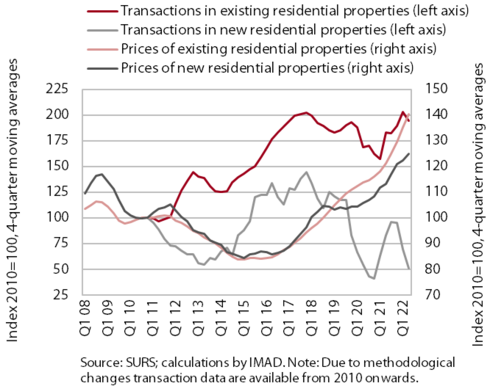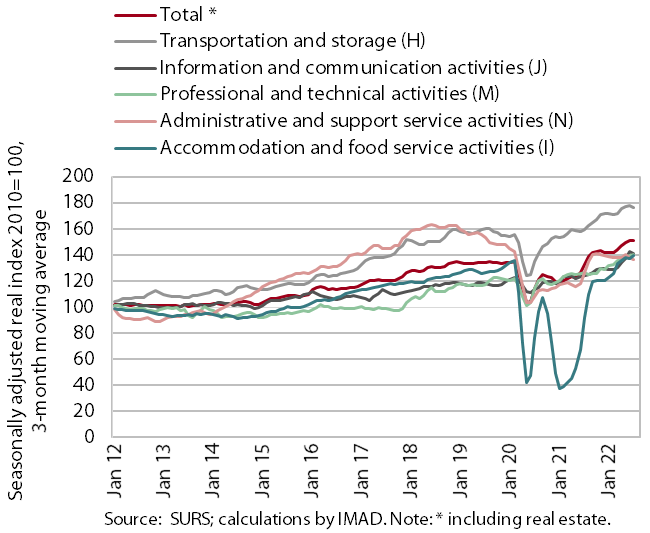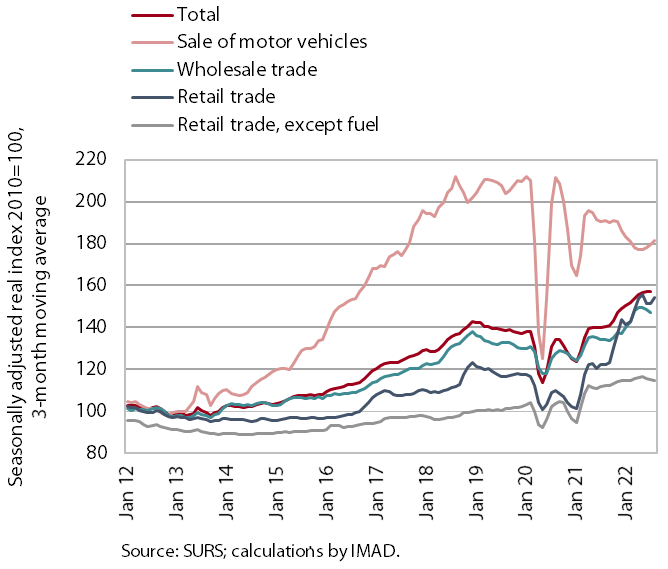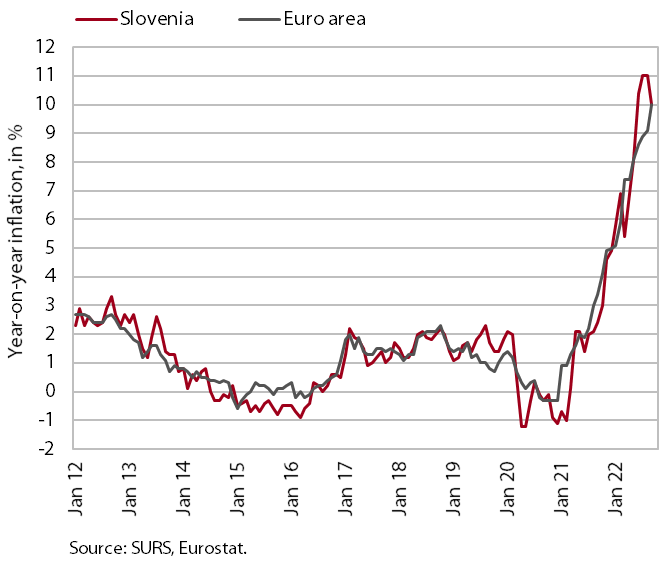Charts of the Week
Current economic trends from 26 to 30 September 2022: real estate, turnover in market services, turnover in trade and consumer prices
Prices of dwellings, especially existing ones, continued to rise in the second quarter, while the number of transactions declined. Real turnover in market services declined in July after five months of growth. In most trade sectors, real turnover, which had stagnated in the second quarter, remained unchanged in July and, according to preliminary data, also in August. Consumer price growth slowed to 10% in September, mainly due to measures to curb rising energy prices.
Real estate, Q2 2022

Amid a slightly lower number of transactions, the growth of dwelling prices was still high in Q2 2022. After an increase of 11.5% in 2021 as a whole, prices rose by 15.6% year-on-year. The high growth was mainly due to higher prices of existing dwellings (by 16.3%), whose number of transactions was significantly lower year-on-year (by 15.9%) after peaking in Q2 last year. Prices of newly built dwellings were also higher (by 8.4%), but these dwellings accounted for only 2% of all transactions due to insufficient supply. The total value of housing transactions for all types of dwellings sold in the second quarter was EUR 449 million, about a tenth less than in the same quarter last year.
Turnover in market services, July 2022

After five months of growth, real turnover in market services fell by 3.5% in July, while it was 4.3% higher year-on-year. The sharpest decline in current terms was in information and communication activities, which had seen accelerated growth in the previous month. We assume that the deterioration was due to developments in the domestic market, as turnover from computer services exports continued to rise. Turnover continued to decline in transportation and storage, especially in land transport and postal activities. It also declined in other business activities, especially in services that are often outsourced. As the number of overnight stays by tourists continued to increase, turnover in accommodation and food service activities remained at a high level, as did in professional and technical activities.
Turnover in trade, July–August 2022

Turnover in most trade sectors, which stagnated in the second quarter, remained unchanged in July and, according to preliminary data, also in August. Only the sale of motor vehicles recorded a slightly stronger increase in July and, according to preliminary data, also in August. Despite the increase, this was the only major trade segment to fall far short of pre-epidemic turnover due to low sales at the end of last year and the beginning of this year; turnover was also lower than last year. In July, turnover in retail sale of food, beverages and tobacco also remained lower year-on-year. In other sectors, year-on-year turnover growth continued to weaken in July. According to the preliminary data, turnover in most segments for which data are available remained at a similar level in August as in the second quarter.
Consumer prices, September 2022

Year-on-year consumer price growth moderated to 10% in September. This was to a large extent the result of the government’s measures to mitigate the impact of the price increase by reducing taxes and regulating the prices of certain energy sources. In September, the price of electricity fell by almost a quarter month-on-month, while it was slightly more than half a percent higher year-on-year. Despite the lower VAT, the rapid increase in solid fuel prices continued. They rose by almost 15% month-on-month and by over 90% year-on-year. Food prices continued to rise gradually, by 14.4% year-on-year. Amid a higher month-on-month price increase in the clothing and footwear group in September, the year-on-year price increase for semi-durable goods also increased, reaching 5.1%. Year-on-year growth in the prices of durable goods and services stabilised roughly at the levels reached (10% and 5%, respectively).
